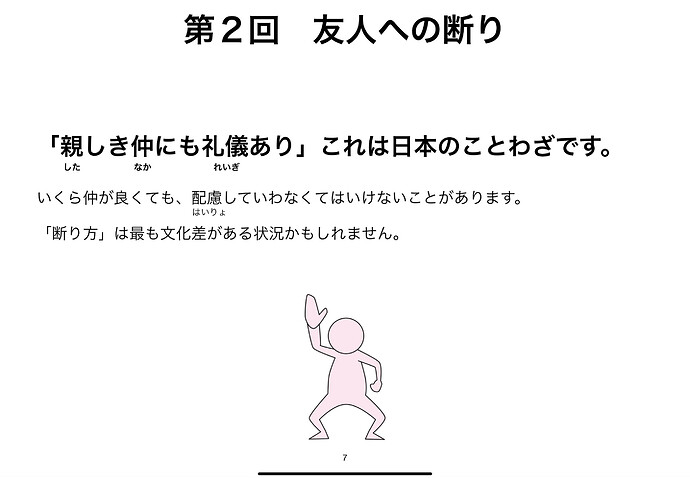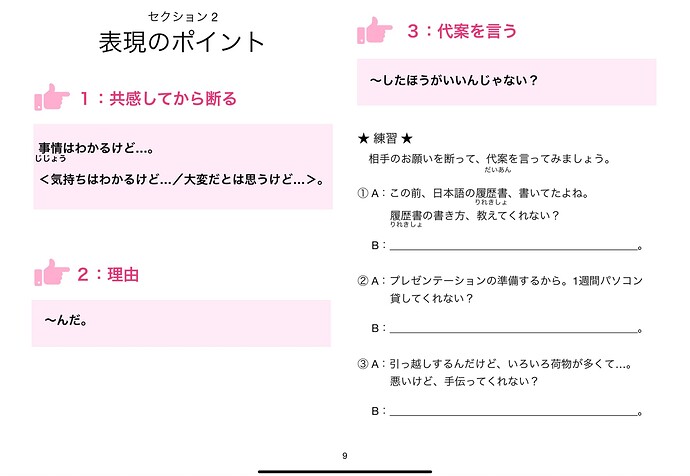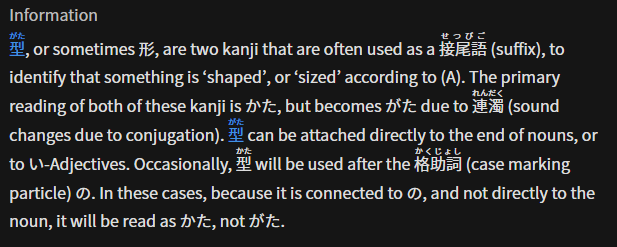I have a suggestion for a future update. Though this may be difficult to implement. In my Japanese language school, we have practice were we learn ways to communicate and respond in different situations. Specifically because culturally we will probably think to respond differently than what might be expected as polite in Japanese society.
For instance, the following example is a general way to refuse a friend.
Then here is an example prompt and conversation:
Prompt:
会話2:友人への断り
あなたは友人の田中さんにパソコンを貸してほしいと頼まれました。
田中さんのパソコンがこわれてしまったので、週末だけ貸してほしいと言っ
ています。
あなたもプレゼンの準備があるで貸すことができません。
ていねいに断ってください。
Conversation:
会話2:友人への断り
A:ねえ、田中さん、ちょっといい?
B:うん、いいけど、何? A:実は、週末、パソコンを貸してもらえないかなあと思って。。。
B:えっ、週末?どうして?
A:私のパソコンがこわれてしまって。。
B:そうか、事情はわかるけど。。。ごめん、今は無理。 (共感してから断る) 私もプレゼンの準備があるんだ (理由)
A:そうか、わかった。
B:学校に相談したほうがいいんじゃない? (代案を言う)
A:そうだね、相談してみるよ、ありがとう




 ).
).